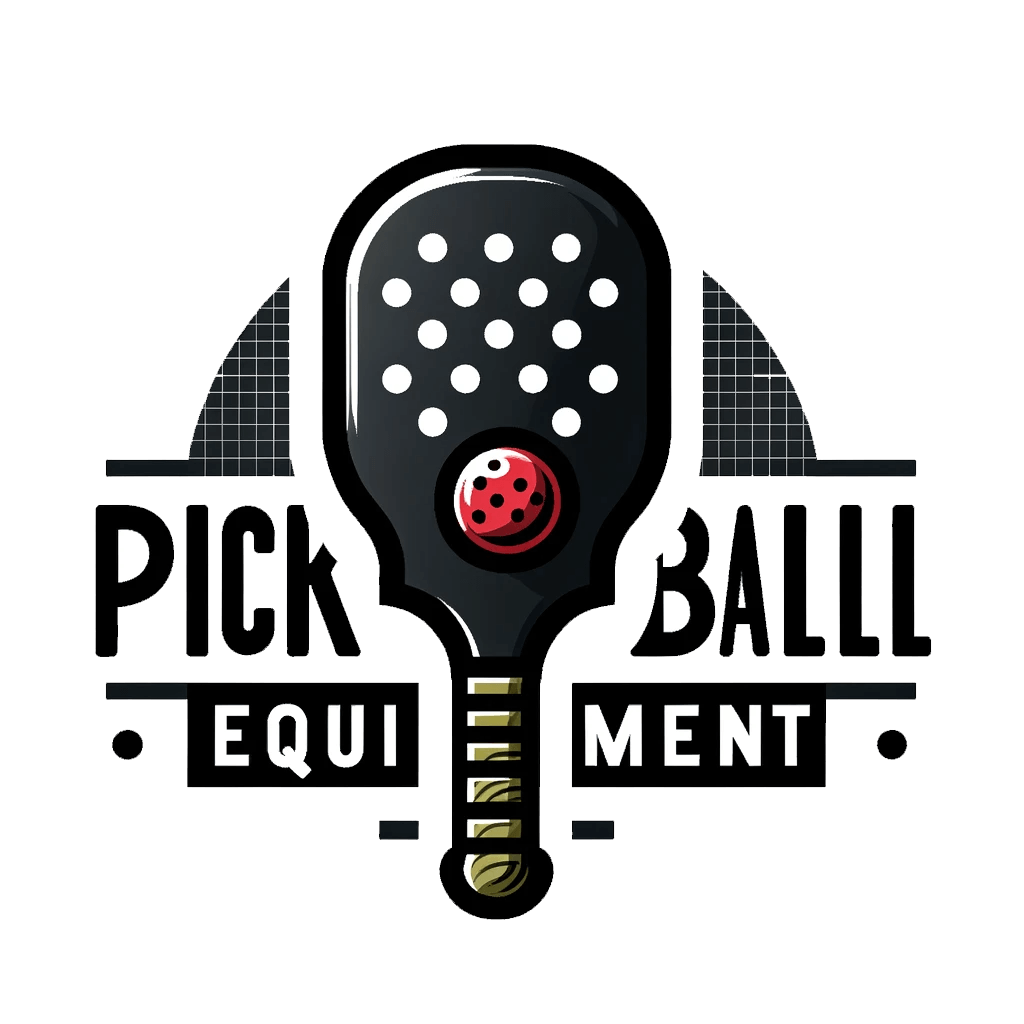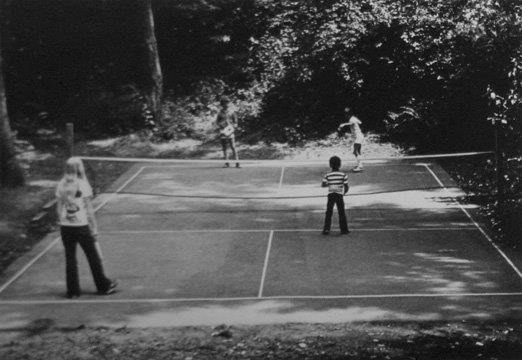Pickleball history, a beloved paddle sport that combines elements of tennis, badminton, and ping pong, has captured the hearts of players around the world. This fast-paced game is played with wooden paddles and a unique ball. It’s a great way to get some exercise while enjoying the thrill of competition. One of the key strategies in pickleball is to aim for the volley zone, which is the area close to the net. So grab your wooden paddles and get ready to have a blast playing this exciting sport! But do you know how the game of whiffle ball, a popular league sport, came to be? It’s an interesting dog story.
The origins of pickleball, a sport that combines elements of table tennis paddles and volley zone, can be traced back to the mid-1960s on Bainbridge Island, Washington. It was created by Joel Pritchard and Bill Bell, who wanted to invent a new game to entertain their families during the summer. They used table tennis paddles and a perforated plastic ball and initially played on a badminton court with a lowered net.
The game quickly gained popularity, and soon the first official pickleball court was built with a specific volley line marking the area. It was here that three pickleball players – Joel Pritchard, Bill Bell, and Barney McCallum – created this unique sport as a way to entertain their families during the summer. The sport gained popularity and soon led to the first pickleball tournament and eventually the pickleball championship. Today, pickleball players can enjoy playing on a dedicated pickleball court.
Since its humble beginnings, pickleball has grown into a global sensation. The sport is played in a league format, with players competing in doubles matches. One key aspect of the game is the volley zone, where players can hit the ball before it bounces. With its fast-paced and exciting gameplay, pickleball has become a favorite among sports enthusiasts around the world. Its accessibility and enjoyable gameplay have attracted players from all walks of life, including those in wheelchair leagues.
The games are a hit among all types of players. Whether you’re a seasoned player or new to the game, understanding the history of pickleball provides valuable context and appreciation for this thriving sport. From the early days of the sport to the present, pickleball has evolved into a popular game played in the volley zone. Whether you’re playing casual games or competing in a tour, keeping track of your score is essential.
Join us as we uncover the rich history of pickleball, a game that combines elements of volleyball and other games, and discover why it continues to bring people together on courts worldwide. Whether you are part of a tour or playing with your team, pickleball is a sport that fosters connection and camaraderie.
Key Takeaways
- Pickleball, combining tennis and ping pong, is globally popular.
- Invented in 1960s Washington, initially played with table tennis paddles.
- Rapid global growth, played in leagues and wheelchair-friendly.
- Originated from Joel Pritchard, Bill Bell, and Barney McCallum.
- Evolved from family game to competitive sport with dedicated courts.
The Birth of Pickleball
Invention and Creators
Pickleball, a family-friendly activity, was created by Joel Pritchard, Bill Bell, and Barney McCallum. It is played with a volley by players on a team. One unique aspect of pickleball is that it can be played by wheelchair users, making it an inclusive sport for all. During the summer holidays, they wanted to find a way to keep their children entertained. They decided to introduce their kids to the sport of volleyball.
The children quickly became skilled players and enjoyed playing on their team’s side. With their creative minds at work, the team of players came up with a game called pickleball that involved volleying the ball back and forth to score points. In the early days, USA pickleball players played using improvised equipment like wooden paddles and a perforated plastic ball to volley and score. It was all about having fun and spending quality time together as a team, playing volley with our dog.
Naming the Game
Now, let’s dive into how this unique sport, USA pickleball, got its name. It all started with the volley, a key move that every player on the team must master. The story goes back to the Pritchard family’s dog named Pickles. Pickles was a beloved member of the family and a loyal companion. One day, while playing fetch in the park, Pickles stumbled upon a mysterious package buried in the ground. Curiosity got the best of him, and he started digging it up. To his surprise, he uncovered a hidden stash of valuable items. The Pritchard family was amazed by their furry friend’s discovery and grateful for his keen sense of smell.
Pickles became an instant hero in their eyes This furry friend had a knack for chasing after stray balls during their pickle boat adventures on Bainbridge Island in Washington state. The team’s score would often improve with their help, as they retrieved the balls and returned them to the server. As the game gained popularity among friends and neighbors, the score of the game started to matter. It became known as “Pickle’s Ball” due to Pickles’ playful involvement as a team member.
The game involves two sides, each with their own server. Over time, players started referring to it simply as pickleball, a game played with a team on each side, aiming to score points by serving the ball. And just like that, a catchy name was born that perfectly captured the spirit of this exciting new sport. The team’s score was determined by how well they played on each side of the pickle.
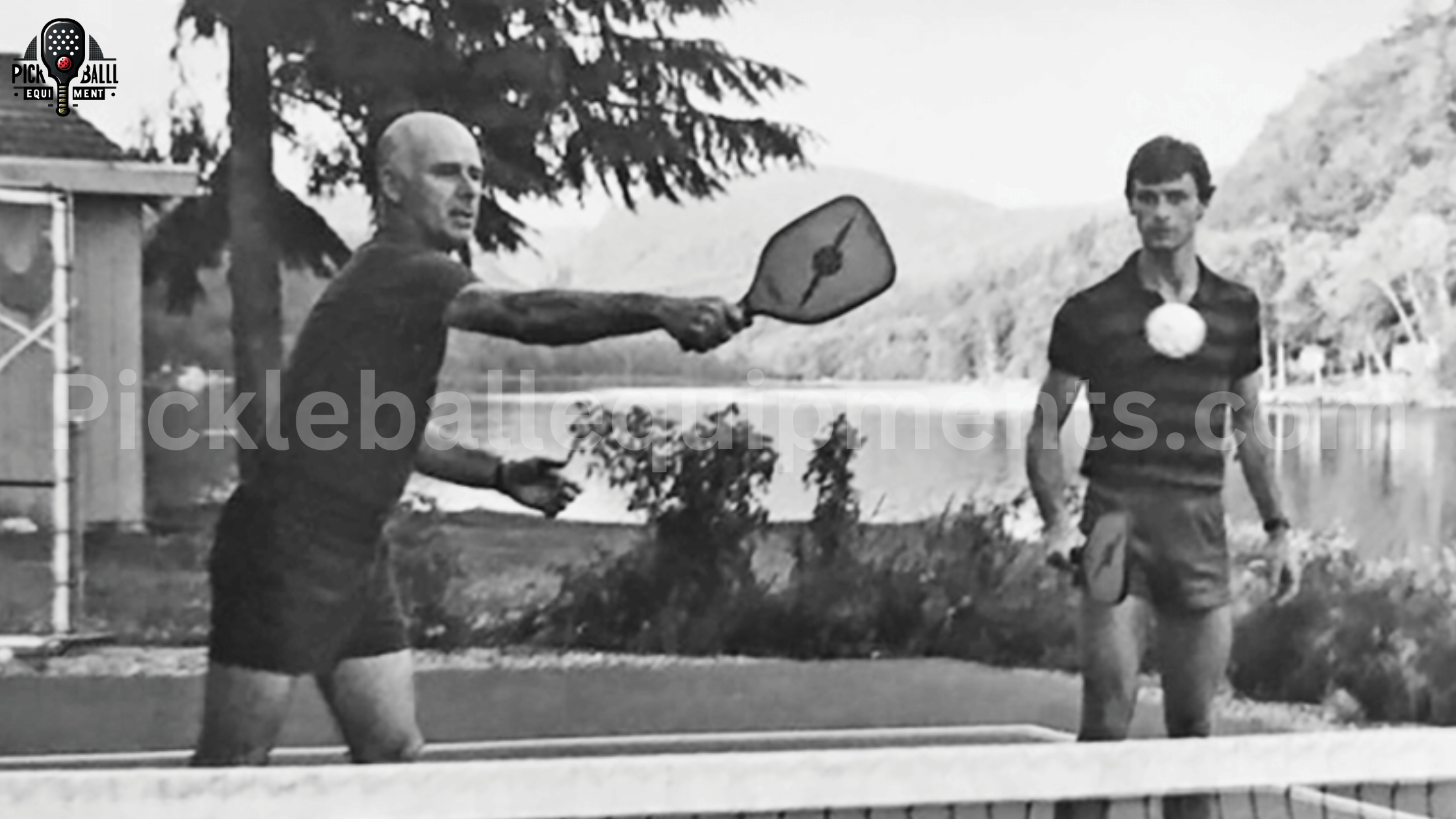
First Paddle and Ball
The pioneers of pickleball didn’t stop at inventing the game; they also took charge of creating the necessary equipment. This team ensured that the server, score, and service were all accounted for in their invention. Joel Pritchard’s wife, Joan, served the team by stepping in and designing the first-ever pickleball paddle using plywood from their garage.
It was a simple yet effective solution that laid the foundation for future paddle designs in modern-day pickleball. The paddle’s ability to serve and its side design were key factors in its success, making it a popular choice among players. This innovative service and side feature set the paddle apart from others, establishing it as a game-changing piece of equipment in the world of pickleball.
As for the pickleball used in those early days, it was quite an interesting creation too! It served as a unique side to the game, adding a new dimension of excitement. The pickleball quickly gained popularity and became a staple in the sport. Today, it continues to be an essential part of the game, serving players with its unique characteristics and enhancing their overall experience.
They took a plastic baseball and drilled holes into it to serve as a lighter side and create air resistance when hit by paddles. This innovative modification enhanced the overall service of the game. This innovative approach allowed for better control and added excitement to each rally. It brought a new side to the game, making it more thrilling to serve.
These initial inventions may have been rudimentary compared to today’s advanced equipment, but they were the building blocks of the sport we know and love. On the side, they also served as the foundation for future developments. The early pioneers’ resourcefulness and ingenuity served as the foundation for pickleball’s evolution, leading to the development of high-quality paddles and specialized balls that enhance gameplay on the serve side.
Early Development and Play
The history of pickleball can be traced back to its early development and play, serving as a testament to its enduring popularity. Let’s dive into the first official tournament, the rules and court design, as well as the initial growth of this exciting sport. One of the key aspects of this sport is the serve, which plays a crucial role in each match.
First Official Tournament
In 1967, pickleball made its debut in an official tournament on Bainbridge Island, Washington, where it served as the perfect opportunity to showcase the sport’s exciting gameplay and competitive spirit. This groundbreaking event was organized by Barney McCallum and featured eight teams competing to serve for glory on makeshift courts. It was a true grassroots effort that set the stage for pickleball’s future success.
The inaugural tournament marked a significant milestone in the establishment of pickleball as a competitive sport. Players showcased their skills and enthusiasm for this new game, creating an environment filled with excitement and camaraderie. The success of this event paved the way for future tournaments and helped spread awareness about pickleball beyond its local origins.
Rules and Court Design
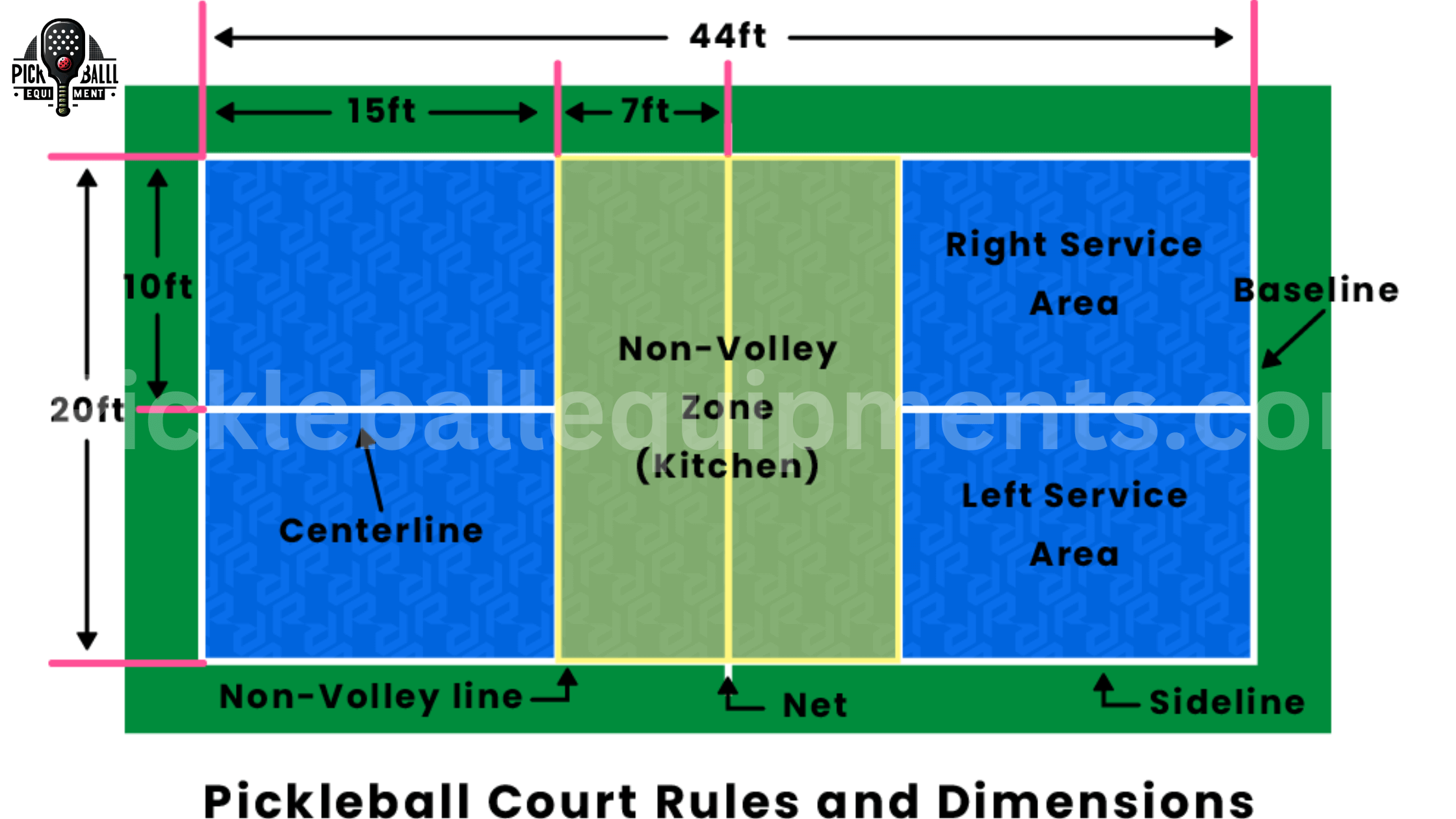
During its early years, pickleball borrowed elements from various sports like badminton, tennis, and ping pong to create a unique playing style. As players experimented with different rule adaptations, a standard set of rules began to emerge.
A standard pickleball court measures 20 feet wide by 44 feet long. It features specific non-volley zones that players must adhere to during gameplay. These zones are designed to prevent players from executing smashes or volleys near the net, ensuring fair competition and strategic gameplay.
Over time, the rules and court design were refined based on player feedback and experience. This continuous evolution aimed to enhance gameplay dynamics while maintaining fairness among competitors. The result is a well-balanced game that requires skillful shot placement, agility, and quick reflexes.
Initial Growth
Pickleball quickly gained popularity within local communities in Washington State after its introduction at Bainbridge Island. Word of mouth played a crucial role in spreading awareness about this exciting new sport. People of all ages and skill levels were drawn to pickleball’s unique blend of athleticism and strategy.
As more individuals discovered the appeal of pickleball, its growth expanded beyond the Pacific Northwest. Communities across the country started embracing the sport, setting up courts in parks, community centers, and even private properties. Pickleball became a social activity that brought people together, fostering a sense of belonging and friendly competition.
The initial growth of pickleball can be attributed to its accessibility and inclusivity. The sport is easy to learn, making it suitable for beginners while still providing opportunities for advanced players to showcase their skills. This versatility attracted a diverse range of participants who found joy in playing pickleball.
Organizational Milestones
Formation of Associations
In 1972, the United States of America Pickleball Association (USAPA) was established as the first official pickleball association. This milestone played a pivotal role in promoting and standardizing the sport across the United States. The USAPA provided a platform for players to connect, share knowledge, and organize tournaments. As pickleball’s popularity grew, regional associations also emerged to support local communities and foster grassroots development.
International Federation Establishment
Recognizing the global potential of pickleball, the International Federation of Pickleball (IFP) was formed in 1984. This establishment marked an important step towards making pickleball an internationally recognized sport. The IFP took on the responsibility of overseeing global development and competitions, working closely with national governing bodies around the world. Through collaboration and coordination with various countries, the IFP has played a crucial role in expanding pickleball’s reach beyond national borders.
Professional Tour Emergence
As interest in competitive play soared, professional pickleball tours began emerging in the early 2000s. These tours provided a platform for top players to showcase their skills and compete for prize money. With each tournament attracting spectators and generating excitement, professional pickleball gained recognition as a serious sport. The growth of professional tour circuits has not only elevated the profile of pickleball but has also inspired aspiring players to pursue excellence in their game.
The establishment of these associations and federations has had a profound impact on shaping the future trajectory of pickleball as a sport. Through their efforts, they have helped create standardized rules and regulations that ensure fair play across all levels of competition. They have also been instrumental in organizing national and international tournaments that bring together players from diverse backgrounds.
Furthermore, these organizations have contributed significantly to raising awareness about pickleball by actively promoting its benefits as a recreational activity for people of all ages and abilities. By organizing clinics, workshops, and outreach programs, they have encouraged wider participation and fostered a sense of community among pickleball enthusiasts. As a result, more people are discovering the joy of playing pickleball and embracing it as a lifelong sport.
Pickleball Goes Mainstream
Pickleball has experienced rapid growth in recent years. More and more people of all ages are discovering and playing the sport. The sport’s simplicity and the ability for beginners to quickly pick up the basics have contributed to its widespread appeal.
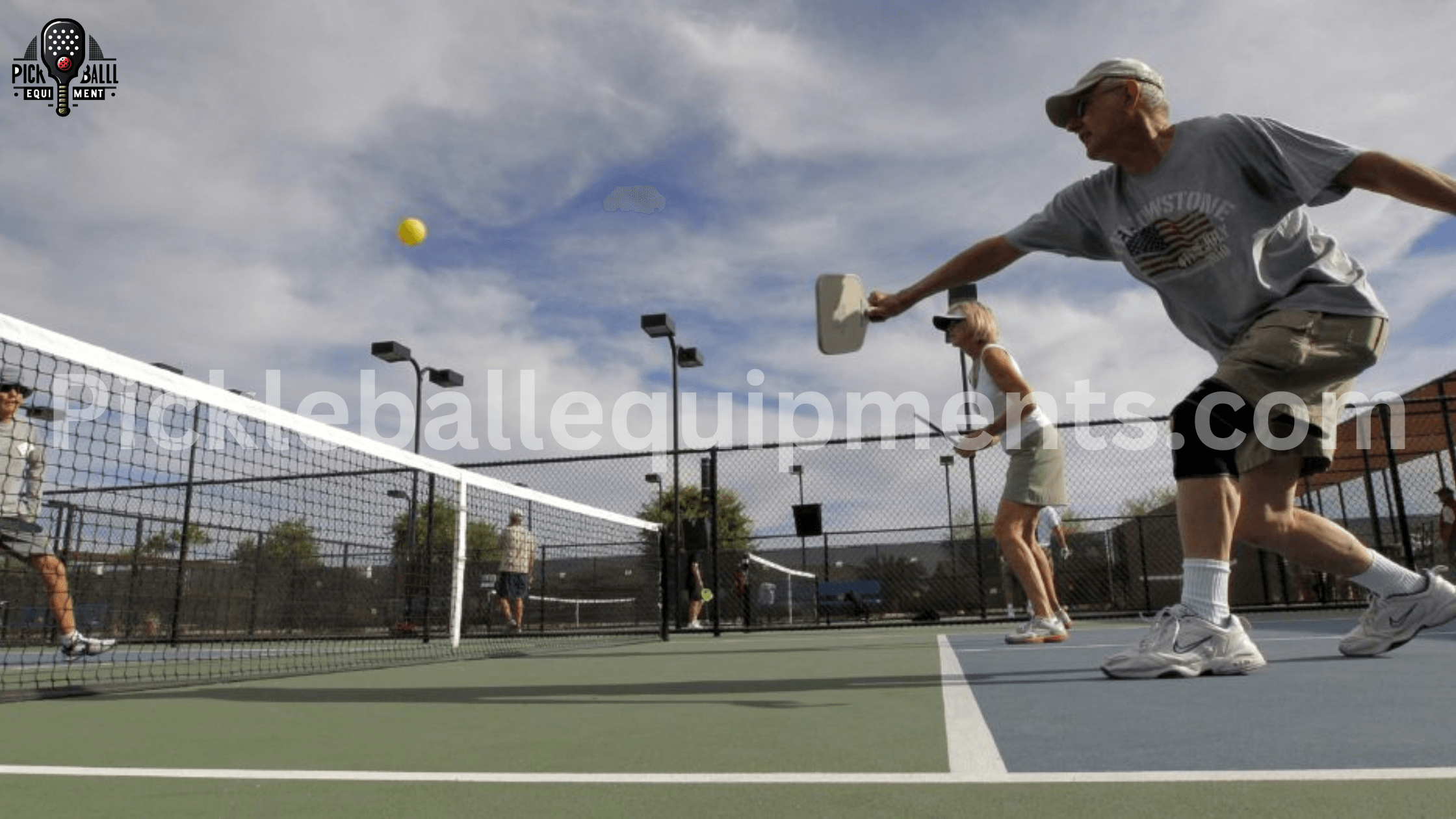
1. Expansion Across North America in the 1980s and 1990s
In the 1980s and 1990s, pickleball saw a dramatic rise in popularity throughout North America. This era was marked by the substantial increase of pickleball courts in various areas including parks, recreation centers, retirement communities, and schools. Recognizing its appeal across all age groups, these venues widely adopted the sport, cementing its status as a popular recreational activity.
2. Record-Setting Moments in Pickleball History
Pickleball’s history is rich with moments that showcase the players’ skill and athleticism. Achievements like the longest rallies, the fastest serves, and high-scoring matches have not only captivated fans but also inspired new players. These records underscore the sport’s competitive nature and its ability to engage a wide audience.
3. Growing Media Coverage Boosts Popularity
In recent years, pickleball’s popularity has been fueled by increased media coverage. Televised tournaments and specialized online platforms have introduced the sport to a broader audience. This exposure, highlighting the sport’s unique mix of tennis, badminton, and ping pong elements, has attracted new enthusiasts to the pickleball community.
4. Word-of-Mouth Recommendations Fuel Interest
The sport’s rise in popularity can also be traced back to personal recommendations from avid players. These enthusiasts have spread their passion for the game to friends and family, creating a ripple effect of interest. This word-of-mouth approach has been a key factor in drawing new players to experience the sport for themselves.
5. Accessibility: A Key Factor in Mainstream Success
Pickleball’s accessibility has been pivotal in its mainstream success. Unlike other sports requiring expensive gear or specialized venues, pickleball only requires a paddle and a ball. This simplicity allows easy entry for anyone interested, making it an affordable and accessible sport for many.
6. Pickleball in Retirement Communities
The sport has found a special place in retirement communities due to its low-impact nature, ideal for keeping residents active and socially engaged. This adoption has linked pickleball with a lifestyle of activity and social engagement among older adults, further boosting its mainstream appeal.
Global Reach and Recognition
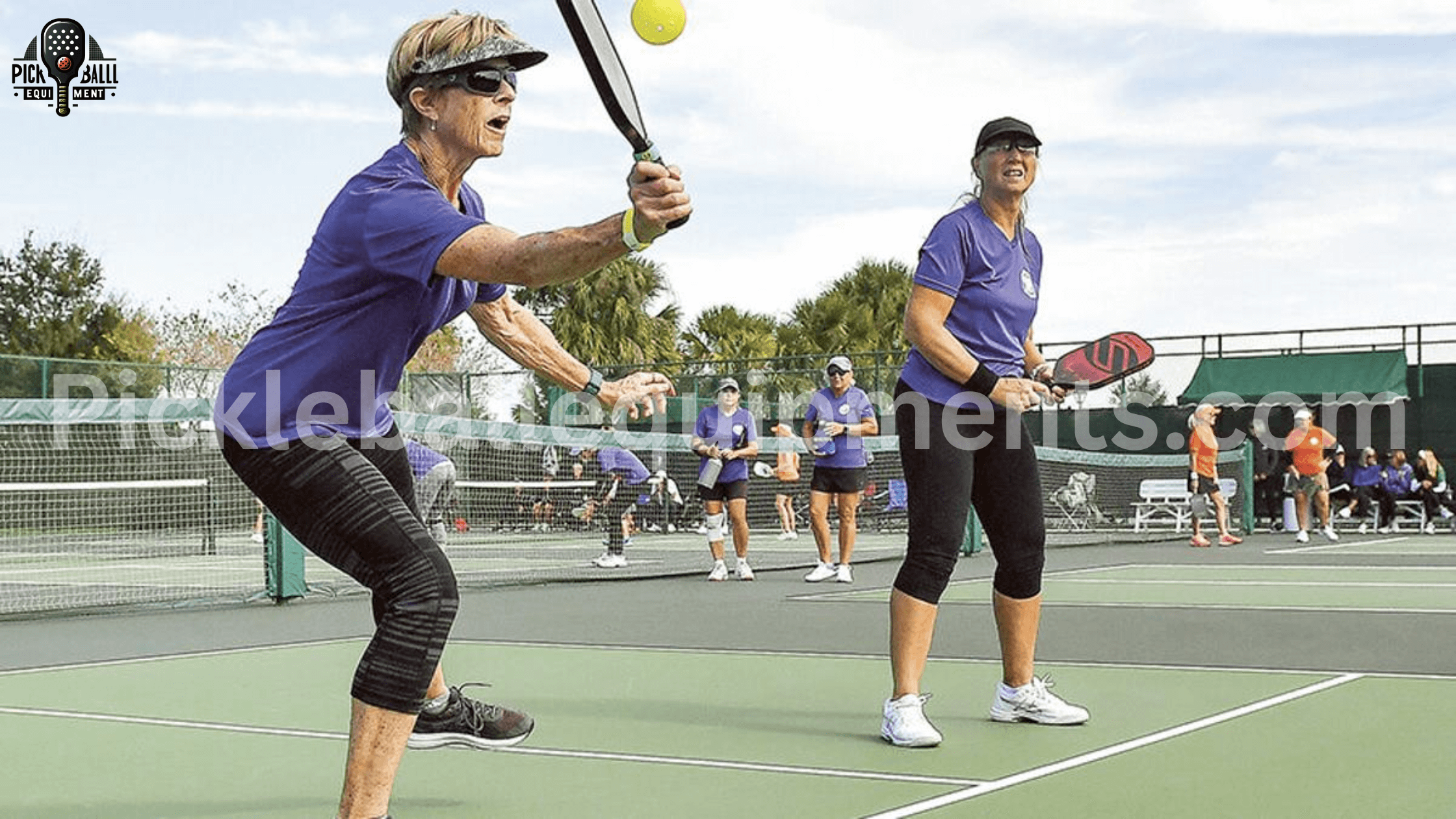
United States Status
The United States is leading the charge in the growth and development of pickleball. It’s no surprise that America boasts the largest number of pickleball players, courts, and tournaments worldwide. The sport has gained immense popularity across the country, with people of all ages and skill levels joining in on the fun.
A major driving force behind pickleball’s success in the United States is the USAPA (United States Pickleball Association). This organization plays a vital role in promoting and governing the sport within the country. Through their efforts, they have been able to establish standardized rules, organize national tournaments, and provide resources for players to improve their skills. The USAPA’s dedication to growing pickleball has undoubtedly contributed to its status as a beloved recreational activity nationwide.
International Expansion
While pickleball may have originated in North America, its popularity has transcended borders and spread rapidly across continents. Europe, Asia, Australia, and South America have all experienced a surge in interest and participation in recent years. The sport’s accessibility, simplicity, and competitive nature have captured the attention of people from diverse cultures around the world.
With this international expansion comes an increase in global competition. Tournaments are now held regularly outside of North America to bring together players from different countries. These events not only foster friendly rivalry but also provide opportunities for cultural exchange through sports.
Noise Controversy and Rule Variations
As pickleball gains more recognition globally, it has faced its fair share of controversies along the way. One such controversy revolves around noise generated by paddle contact with the ball during play. Some venues implemented rules requiring quieter paddles or specific balls to address noise concerns raised by neighboring communities or players seeking a more peaceful playing environment.
Rule variations regarding noise continue to be debated within different pickleball communities worldwide. While some argue that noise adds excitement to the game and should be embraced as part of the sport’s charm, others advocate for stricter regulations to ensure a quieter playing experience. Finding a balance between preserving the essence of pickleball and respecting noise restrictions remains an ongoing challenge for players, tournament organizers, and governing bodies.
Essential Gameplay Mechanics
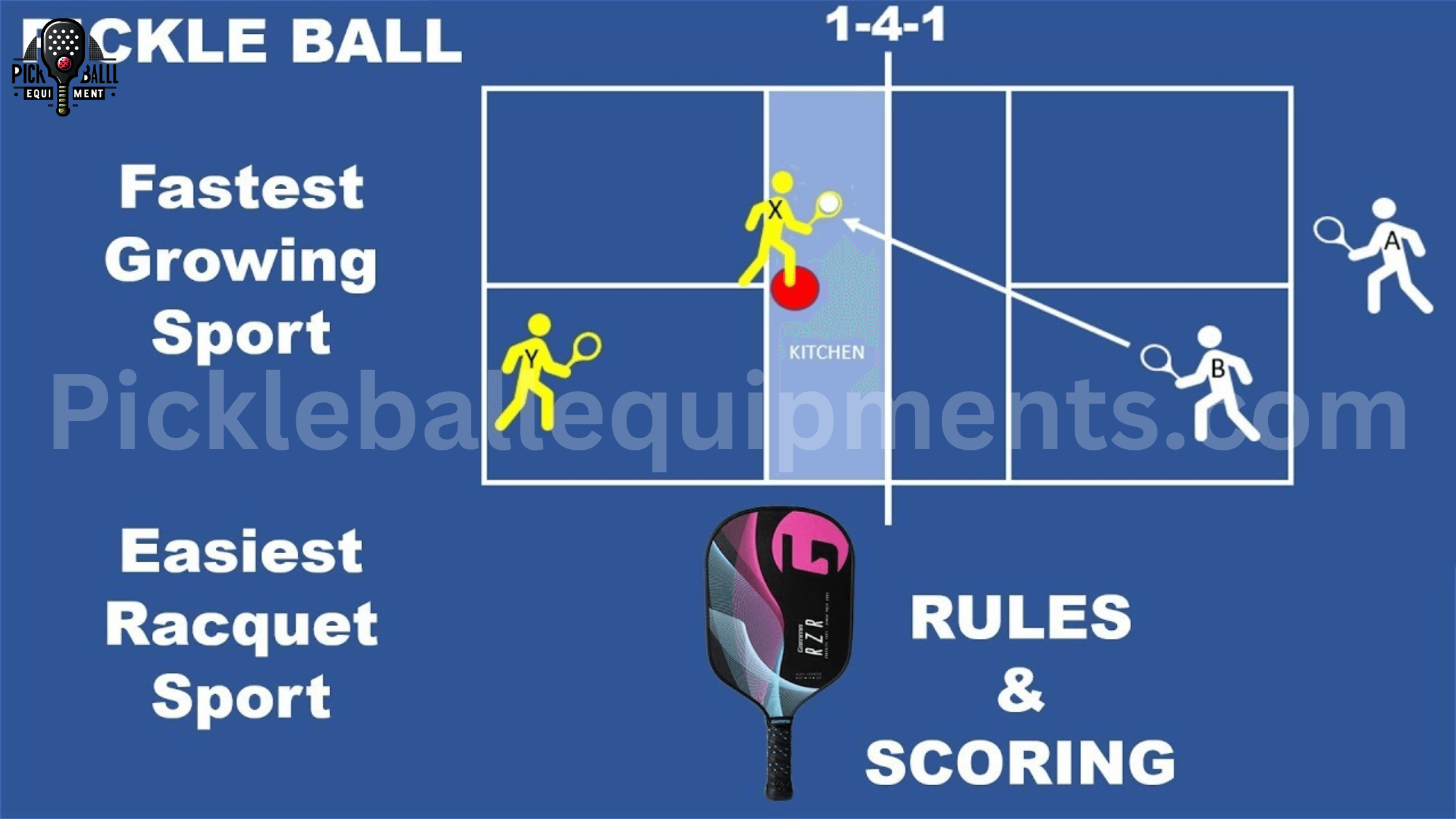
The gameplay mechanics of pickleball are what make it such a unique and exciting sport. Let’s dive into the essential aspects that every player should know.
Scoring System
Things work a little differently compared to other sports. In this game, points can only be won by serving teams. This means that if you’re not serving, you won’t be able to score any points directly. The scoring system adds an element of strategy and excitement to each match.
Games in pickleball are typically played up to 11 or 15 points, depending on local rules. However, there is a catch – you must win with a two-point margin. So even if you reach 11 or 15 points, if your opponent hasn’t reached the same score with a two-point difference, the game continues until someone achieves that winning margin.
This unique scoring system keeps players on their toes and makes every point crucial. It adds an extra layer of intensity as teams strategize their serves and aim for those crucial two-point leads.
Order of Play
In pickleball doubles matches, both partners on one team get an opportunity to serve before their opponents receive serve. This means that the serving team has two chances to score points right off the bat. After that initial sequence, only one player from each team serves for subsequent points until they lose serve or win the game.
The order of play ensures fairness and equal opportunities for all players involved. It prevents any single player from dominating the service and allows everyone on the court to contribute equally throughout the match.
Equipment and Court Specifications
To play pickleball effectively, you need specialized equipment designed specifically for this sport. Pickleball paddles are typically made of lightweight materials like graphite or composite. These materials provide excellent control and maneuverability while minimizing strain on your arm during gameplay.
The ball used in pickleball resembles a wiffle ball, but with unique hole patterns. These holes optimize flight and bounce, ensuring a balance between speed and control. The ball’s design allows for precise shots and exciting rallies.
Pickleball courts have specific dimensions that players must adhere to. They are smaller than traditional tennis courts, measuring 20 feet wide by 44 feet long for doubles matches. There are non-volley zones near the net that players must respect to maintain fair play and prevent excessive volleying.
The Pickleball Timeline
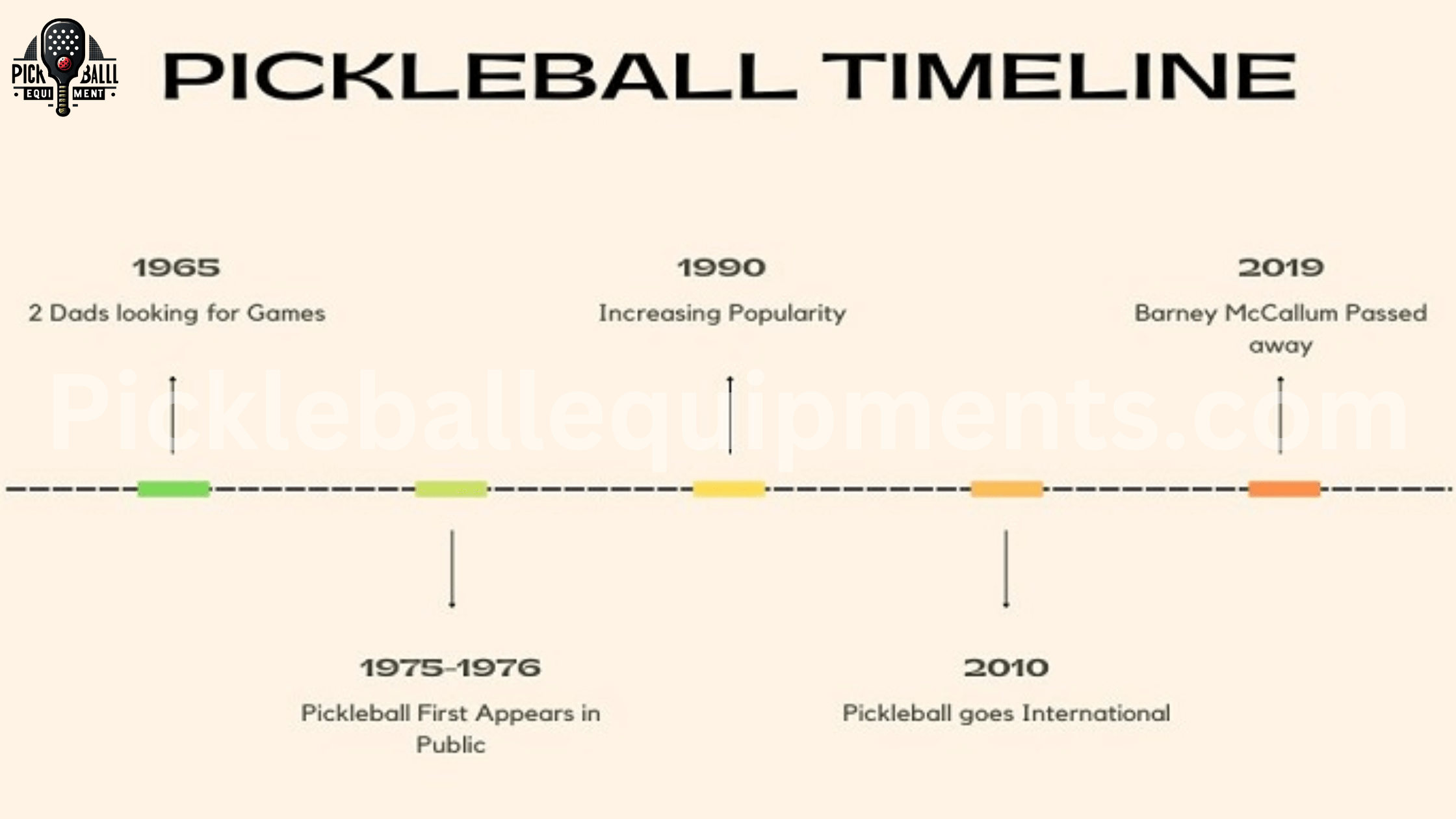
The history of pickleball is filled with key historical events that have shaped the sport into what it is today. From its invention to the formation of associations, these milestones provide valuable insights into the evolution of pickleball.
Key Historical Events
Pickleball’s journey began with its invention in 1965 by Joel Pritchard, Bill Bell, and Barney McCallum. What started as a simple backyard game quickly gained popularity among friends and family. In 1972, the first official tournament was held in Washington state, marking a significant milestone in pickleball’s growth.
As the sport continued to gain traction, various associations were formed to promote and govern pickleball. The United States Pickleball Association (USAPA) was established in 1984 and played a crucial role in standardizing rules and regulations for competitive play. These associations not only provided structure but also helped foster a sense of community among pickleball enthusiasts.
These historical events laid the foundation for pickleball’s development as a recognized sport enjoyed by millions worldwide. Without these milestones, pickleball may have remained just another backyard game.
Milestones in Decades
Each decade since the inception of pickleball has witnessed notable milestones that have contributed to its growth and popularity. In the 1960s, the game took shape as Pritchard, Bell, and McCallum experimented with different equipment and rules. The 1970s saw the spread of pickleball beyond their backyards as more people discovered and embraced the sport.
In the 1980s, organized tournaments became more prevalent, attracting players from across different regions. This era also marked an increased focus on establishing standardized rules and equipment specifications.
The 1990s witnessed further expansion as international players began participating in tournaments held outside of the United States. Pickleball started gaining recognition globally as more countries embraced this exciting sport.
Fast forward to recent years, and pickleball has experienced a surge in popularity. The 2010s saw the introduction of professional tours, such as the Professional Pickleball Federation (PPF), which elevated the level of competition and provided players with opportunities to showcase their skills on a larger stage.
Modern developments have also played a significant role in shaping pickleball’s trajectory. Technological advancements in paddle design and ball construction have led to improved performance and enhanced gameplay. Increased media coverage through television broadcasts and online streaming platforms has brought pickleball into mainstream consciousness, attracting new players and fans alike.
Understanding Pickleball’s Appeal
What Is Pickleball?
Pickleball is a paddle sport that combines elements of tennis, badminton, and ping pong on a smaller court. With specialized paddles and a plastic ball with holes, players can engage in singles or doubles matches. This sport offers an enjoyable mix of strategy, skill, and physical activity for players of all ages.
The Sport’s Unique Characteristics
One of the unique characteristics of pickleball is the non-volley zone near the net where volleys are not allowed. This feature promotes strategic shot placement rather than relying solely on power. By requiring players to think strategically about their shots, pickleball becomes more than just a game of strength.
Compared to tennis, pickleball has a slower pace which makes it accessible to individuals with varying levels of fitness and mobility. It doesn’t require as much running or quick movements across the court. This slower pace allows players to focus on technique and precision rather than relying solely on athleticism.
Community and Cultural Impact
Pickleball has created vibrant communities where players gather for friendly competition, socializing, and support. These communities provide opportunities for people to connect with others who share their passion for the sport. Whether it’s playing in local leagues or participating in tournaments, pickleball brings people together from all walks of life.
In addition to fostering social connections, pickleball promotes an active lifestyle that contributes to physical health and mental well-being. The sport provides an avenue for exercise while also being enjoyable and engaging. Players can improve their cardiovascular fitness, agility, hand-eye coordination, and overall strength through regular play.
Furthermore, one key aspect of pickleball culture is its emphasis on inclusivity. Regardless of age or skill level, anyone can participate in this sport. Beginners can quickly learn the basics while more experienced players can refine their techniques over time. The welcoming nature of pickleball encourages sportsmanship and camaraderie among participants, creating a supportive and friendly environment.
The Future of Pickleball
Technological Advancements
Advances in paddle technology have revolutionized the game of pickleball. Paddles have become lighter, more durable, and designed with enhanced performance characteristics. Players now have access to paddles that offer better control, power, and maneuverability on the court. These technological advancements have significantly contributed to improving the overall playing experience.
In addition to paddle improvements, ball design has also undergone significant advancements. Modern pickleballs are now designed for better flight stability and increased durability. This means players can enjoy longer rallies without worrying about the ball losing its shape or becoming damaged easily. The combination of improved paddles and balls has elevated the level of play in pickleball, making it even more enjoyable for both recreational and competitive players alike.
Growth Projections
Pickleball’s popularity is skyrocketing across the globe, and this trend shows no signs of slowing down. With increasing participation rates and a surge in interest from younger generations, pickleball is projected to experience substantial growth in the coming years. More people are discovering the unique appeal of this fast-paced sport that combines elements of tennis, badminton, and ping pong.
To accommodate this growing demand, new courts are being constructed at an impressive rate. Parks, recreational centers, and private clubs are investing in dedicated pickleball facilities to cater to enthusiasts who want to play regularly. As a result, pickleball’s global footprint is expanding rapidly.
The sport’s inclusive nature also contributes to its growth potential. Pickleball can be played by people of all ages and skill levels due to its simple rules and easy-to-learn mechanics. It provides a social outlet for individuals seeking a fun way to stay active while fostering connections within communities.
Potential Challenges and Solutions
While pickleball continues its ascent toward mainstream recognition, there are some challenges that need addressing along the way. One common concern is the
what are 3 facts about the history of pickleball
noise generated by paddle-ball contact, especially when played in indoor venues or residential areas. The distinct “pop” sound can be disruptive to nearby residents or other activities taking place in the vicinity.
To tackle this challenge, there is a need for collaboration between governing bodies, associations, and players. Implementing quieter equipment options such as noise-dampening paddles could help mitigate the issue. Establishing specific rules regarding noise levels during gameplay can also contribute to finding a solution that benefits all stakeholders involved.
Conclusion
And there you have it, the fascinating history of pickleball! From its humble beginnings on a rainy day to its global recognition and widespread appeal, pickleball has come a long way. We’ve explored the birth of the sport, its early development and milestones, and how it has captured the hearts of players worldwide.
As you reflect on the journey of pickleball, consider how this sport has grown exponentially in popularity. From schoolyards to retirement communities, pickleball offers a unique blend of strategy, athleticism, and camaraderie. Whether you’re a seasoned player or just discovering this exciting game, pickleball provides an opportunity for people of all ages and skill levels to come together and enjoy themselves.
So why not grab a paddle, find a court near you, and join in on the fun? Pickleball is more than just a game; it’s a community that welcomes everyone. Experience the thrill of the sport for yourself and be part of the ongoing story of pickleball’s success. Happy playing!
FAQs
What is the history of pickleball?
Pickleball was invented in 1965 by Joel Pritchard, Bill Bell, and Barney McCallum as a backyard game for their families. It started with improvised equipment and rules but quickly gained popularity. Today, it has evolved into a fast-paced paddle sport played worldwide.
How did pickleball get its name?
The game was named after the Pritchards‘ dog, Pickles, who would chase after the ball and run off with it during their early matches. The name “pickleball” stuck, adding a touch of whimsy to the sport’s history.
Is pickleball similar to tennis?
While pickleball shares some similarities with tennis, such as using a court and net, it has its own unique characteristics. Pickleball is played on a smaller court with paddles instead of racquets and a plastic ball with holes. It combines elements of tennis, badminton, and ping pong.
When did pickleball gain widespread popularity?
Pickleball gained significant popularity in the 1970s when people from across the United States started playing it recreationally. In recent years, its popularity has surged even further due to its accessibility for all ages and skill levels.
Is pickleball an Olympic sport?
As of now, pickleball is not an Olympic sport. However, efforts are underway to have it included in future Olympic Games. The International Federation of Pickleball (IFP) is actively working towards achieving this goal by promoting the growth of the sport globally.
